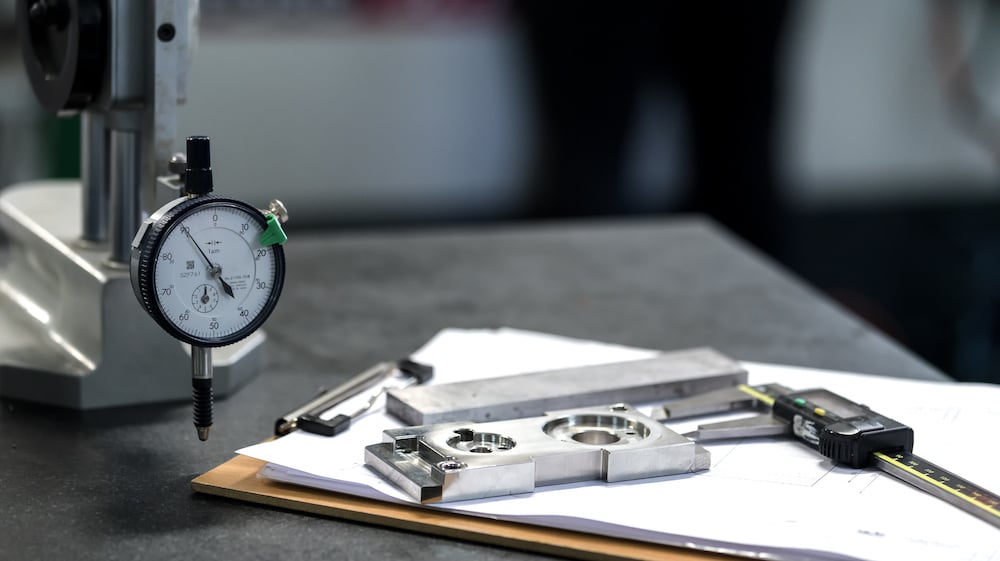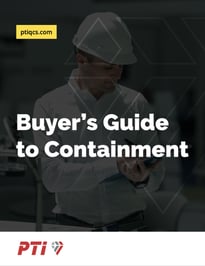There are several considerations to make when selecting a containment provider that goes beyond the bottom-line hourly rate. Done properly, containment is more than a quick fix to a one-time problem. It is a support system for your quality processes that adds value to your organization by helping prevent future issues.

To that end, not all containment providers are equal. There are several important considerations to make about their experience, organization, technology use, and more. Let’s take a closer look at 10 of the most important questions you can ask when choosing a provider.
Who Have You Worked With?
It’s important that your containment provider has experience working with parts comparable to yours. They may have a decade of experience, but if they’ve primarily worked with small components, they likely don’t have the background needed for complex chassis or engine assemblies. Similarly, do they have experience working with a company your size, scaling their efforts to match the needs of a large and sweeping project in multiple locations? Do they have the engineering expertise and industry-oriented experience on staff needed to match your needs?
Are Your Certified?
Both general and industry-specific quality certifications help to ensure your provider meets the highest level of industry standards. Look for certifications such as ISO 9001, ISO/TS 16949, IATF 16949. Additionally, if they have worked with or been vetted to work with OEMs or Tier 1 manufacturers in the past, they should be on pre-approved supplier lists.
Who Are Your Employees?
While many companies hire contractors to fill gaps at certain times of the year, your containment provider should maintain a large, flexible staff of full-time employees who have been through the full training regimen offered by their company. If they do hire contractors, make sure you understand the guidelines those individuals are expected to follow and the process by which they are vetted and hired. Ask about historical rotation and make sure it is in line with the rotation of the region, or ideally lower than the average. With the right combination of training, full-time staff, and technology, such as digital work instructions and training processes, they should be able to meet or exceed these benchmarks.
Who Are Your Supervisors?
Ask about their management structure and how supervisors are assigned to individual projects? Is management on the floor with the inspection teams when they enter your facility? If so, how often are they available, and is it easy to connect with them if there is a problem or question? In addition, learn more about their educational and professional background. Does management have any additional certifications such as Six Sigma / Lean that are relevant? Do they utilize any technology, like a digital andon cord, to improve communications and limit the supervisor to employee ratio on the floor?
How Quickly Can You Start?
This is an important question for most jobs. After all, you won’t hire a provider who can’t start immediately when you have an ongoing quality issue that needs to be addressed. But what about the future? What is the average ramp-up time overall and what capacity do they have to scale if you need support in multiple facilities? Do they utilize any Industry 4.0 technologies to expedite the training and onboarding process for a new project? How much have they invested in information and front line infrastructure?
Do You Have Engineering on Staff?
A big part of proactive containment is evaluating and providing insights on how best to avoid future quality issues. This requires engineering in-house to support the implementation of new technology applications as well as process deployment for unique or new situations. Ask about the current engineers on staff and their background in your industry.
What Technology Tools Do You Use?
Digital inspection offers significant advantages over traditional, paper-based processes. It can be centrally managed, allows for the collection of data on all elements of the inspection process, and ensures greater traceability for future audits and training procedures. Learn about the tools, applications, and systems they use that will enable greater insights both during and after inspection.
Who Are My Points of Contact?
Learn more about the level of service you will receive when an inspection is required. Especially in the event of an active quality disruption, this is incredibly important. How easy is it to get someone on the phone? What does reporting look like? How carefully will they walk you through the process and help take major elements of the process of your plate?
Where Are You Located?
If you operate multiple locations across different states or countries, you want to know your containment provider is capable of scaling to meet your needs. Ask if they have a presence in multiple locations and how easily they can shift resources in the event of a new quality issue in a different plant. Do they have the team and resources to work across multiple locations for complex jobs?
What Does Your Training Process Look Like?
What is the training process for both full-time and contract employees? Ask questions about the equipment offered, safety procedures followed, and the depth of the training protocol when onboarding someone new. Additionally, ask about how they prepare employees for a new inspection job. What training do they provide about your facility before sending employees in?
With the answers to these 10 questions, you should have a much better understanding of the experience level, process-orientation, and background of your prospective containment provider. To learn more about the key considerations you should make when choosing a quality partner, contact us today and ask to speak with a quality containment expert.
 Download our Buyer's Guide to Quality Containment to learn more about what you should be asking your next provider and the ways that technology and a forward thinking approach can help you create value.
Download our Buyer's Guide to Quality Containment to learn more about what you should be asking your next provider and the ways that technology and a forward thinking approach can help you create value.



